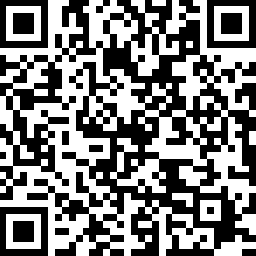
下载亿题库APP
联系电话:400-660-1360

下载亿题库APP
联系电话:400-660-1360

请谨慎保管和记忆你的密码,以免泄露和丢失

请谨慎保管和记忆你的密码,以免泄露和丢失

小伙伴们,托福考试大家复习的怎么样了呢?下面是帮考网分享的一些托福考试阅读部分的复习资料,一起来看看吧!
Some animal behaviorists argue that certain animals can remember past events, anticipate future ones, make plans and choices, and coordinate activities within a group. These scientists, however, are cautious about the extent to which animals can be credited with conscious processing.
Explanations of animal behavior that leave out any sort of consciousness at all and ascribe actions entirely to instinct leave many questions unanswered. One example of such unexplained behavior: honeybees communicate the sources of nectar to one another by doing a dance in a figure-eight pattern. The orientation of the dance conveys the position of the food relative to the sun\'s position in the sky, and the speed of the dance tells how far the food source is from the hive. Most researchers assume that the ability to perform and encode the dance is innate and shows no special intelligence. But in one study, when experimenters kept changing the site of the food source, each time moving the food 25 percent farther from the previous site, foraging honeybees began to anticipate where the food source would appear next. When the researchers arrived at the new location, they would find the bees circling the spot, waiting for their food. No one has yet explained how bees, whose brains weigh four ten-thousandths of an ounce, could have inferred the location of the new site.
Other behaviors that may indicate some cognition include tool use. Many animals, like the otter who uses a stone to crack mussel shells, are capable of using objects in the natural environment as rudimentary tools. One researcher has found that mother chimpanzees occasionally show their young how to use tools to open hard nuts. In one study, chimpanzees compared two pairs of food wells containing chocolate chips. One pair might contain, say, five chips and three chips, the other four chips and three chips. Allowed to choose which pair they wanted, the chimpanzees almost always chose the one with the higher total, showing some sort of summing ability. Other chimpanzees have learned to use numerals to label quantities of items and do simple sums.
1. What does the passage mainly discuss?
(A) The role of instinct in animal behavior
(B) Observations that suggest consciousness in animal behavior
(C) The use of food in studies of animal behavior
(D) Differences between the behavior of animals in their natural environments and in laboratory
2. Which of the following is NOT discussed as an ability animals are thought to have?
(A) Selecting among choices
(B) Anticipating events to come
(C) Remembering past experiences
(D) Communicating emotions
3. What is the purpose of the honeybee dance?
(A) To determine the quantity of food at a site
(B) To communicate the location of food
(C) To increase the speed of travel to food sources
(D) To identify the type of nectar that is available
4. The word yet in line 15 is closest in meaning to
(A) however
(B) since
(C) generally
(D) so far
5. What did researchers discover in the study of honeybees discussed in paragraph 2?
(A) Bees are able to travel at greater speeds than scientists thought.
(B) The bees could travel 25% farther than scientists expected.
(C) The bees were able to determine in advance where scientists would place their food.
(D) Changing the location of food caused bees to decrease their dance activity.
6. It can be inferred from the passage that brain size is assumed to
(A) be an indicator of cognitive ability
(B) vary among individuals within a species
(C) be related to food consumption
(D) correspond to levels of activity
7. Why are otters and mussel shells included in the discussion in paragraph 3?
(A) To provide an example of tool use among animals
(B) To prove that certain species demonstrate greater ability in tool use than other species
(C) To illustrate how otters are using objects as tools
(D) To demonstrate why mother chimpanzees show their young how to use tools
8. The word rudimentary in line 20 is closest in meaning to
(A) superior
(B) original
(C) basic
(D) technical
9. It can be inferred from the statement about mother chimpanzees and their young (lines 20-22)
that young chimpanzees have difficulty
(A) communicating with their mothers
(B) adding quantities
(C) making choices
(D) opening hard nuts
10. The phrase the one in line 24-25 refers to the
(A) study
(B) pair
(C) chimpanzee
(D) ability
11. Scientists concluded from the experiment with chimpanzees and chocolate chips that
chimpanzees
(A) lack abilities that other primates have
(B) prefer to work in pairs or groups
(C) exhibit behavior that indicates certain mathematical abilities
(D) have difficulty selecting when given choices
PASSAGE 79 BDBDC AACDB C
好了,以上就是今天分享的全部内容了,各位小伙伴根据自己的情况进行查阅,希望本文对各位有所帮助,预祝各位取得满意的成绩,如需了解更多相关内容,请关注帮考网!
 22
22托福考试中能否取消考试成绩?:托福考试中能否取消考试成绩?考生可以在考试结束之前选择取消本次成绩,至此考生本人和申请的学校都将无法查询成绩,也不会收到成绩单。考试结束后则不能再取消成绩。
 32
32托福考试如何计分?:托福考试如何计分?托福考试的四个环节,分数由电脑自动生成和人工评分(经过专业培训的权威人士)两部分组成,确保分数的公平及准确性。只有托福考试采用这种多人评分机制,通过不记名方式,由多名接受过严格培训的考官予以评分,过程经过质量监控,达到高标准的公平性与客观性。
 43
43托福考试的考场规则是什么?:托福考试的考场规则是什么?1.考生须服从考务人员的指令,不得大声喧哗扰乱考场秩序,有问题须举手示意等待考务人员前来解决。2.考生在考场的任何违规或舞弊行为都将被如实报告给ETS,违规或舞弊行为将会影响考生的考试成绩甚至考试资格。因违规舞弊而被取消考试成绩或考试资格的考生不得申请更改、退考或退款;情节严重者有可能被禁止参加以后的考试。